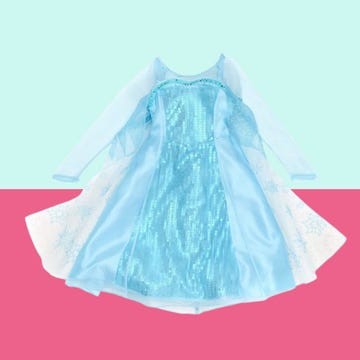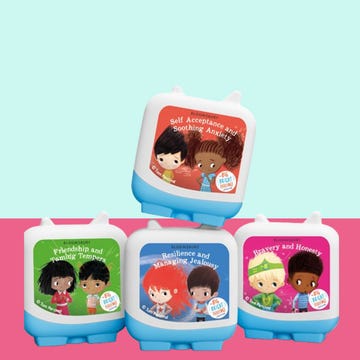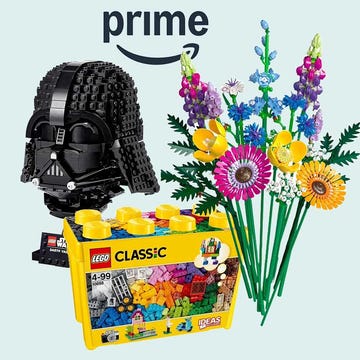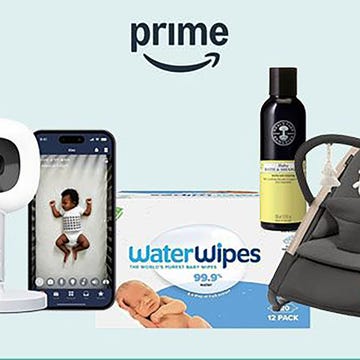We earn a commission for products purchased through some links in this article.
The best baby bottle sterilisers for keeping bugs at bay
Tried and tested by experts and a panel of parents

You can spend hours looking at cute little baby grows, hats and adorable mini booties, but when it comes to the practical purchases, whether it’s a baby monitor, a travel cot, or a baby bottle steriliser to keep their kit free from germs, it’s all about performance.
There are lots of different types of bottle sterilisers, so it can be hard to know where to start, especially if you’re a first-time parent. That’s why we decided to put them to the test in the Good Housekeeping Institute lab and with a panel of parents at home.
We analysed a range of sterilisers suited to different needs and budgets. These are our top-rated buys at a glance but keep reading for the full verdicts and everything you need to know before you shop.
Why do I need a steriliser?
“When it comes to keeping your little one safe, proper sterilisation of feeding equipment is essential, especially in those early months when their immune system is still developing,” says Louise Broadbridge, aka The Honest Midwife.
“The warm, moist environment of a used baby bottle is the perfect place for bacteria to thrive. This can lead to your baby suffering from infections or tummy upsets. Thoroughly washing bottles and feeding equipment in hot soapy water will remove visible remnants of milk, but sterilising will give you that extra layer of protection by ensuring bacteria left behind is removed.” she adds.
The NHS recommends sterilising all your baby’s feeding equipment until they’re at least 12 months old.
These gadgets aren’t limited to cleaning feeding devices either – many can also be used to sterilise breast pumps, hard teething toys, dummies and more.
What are the different types of sterilisers?
Cold water steriliser
With these designs, you either add tablets or a special fluid to cold water to sterilise your baby gear. You leave them in for around 15 minutes and can remove items for up to 24 hours. They’re handy as they don’t require heat or electricity and tend to be more affordable. All items must be completely submerged in the fluid, and you can use any container. The best-known brand for cold water sterilisation is Milton, which scored 95/100 in our tests.
Microwave steam steriliser
A good option if you own a microwave. To use, fill the unit with your bottles etc. and a small amount of water. It then sits inside the microwave and sterilises in just a few minutes using the steam created. Check the internal dimensions of your microwave before buying and take care to put it on the correct power setting.
These are fast, compact and relatively cheap. They use a small amount of power and equipment you already have. However, they can be quite small, so check how many bottles it’s able to clean at a time.
Electric steriliser
An electric steriliser is plugged into mains power and uses steam to sterilise your items. They usually have several levels, so you can place bottles in the bottom and accessories on a top tray. They also come in different sizes, so check their capacity before buying.
Many of these models also feature a dry mode, so the bottles have no residual moisture after being sterilised. You can also keep items in the device, and they’ll remain fully sterilised for up to 24 hours if the lid is kept closed.
Tip: if you can, use distilled water in your steriliser as it reduces limescale build-up.
UV steriliser
These use ultraviolet light to clean your baby’s feeding essentials and offer a water- and chemical-free alternative to traditional sterilisation methods. They tend to be more expensive but can offer greater convenience. They exclusively use UV LEDs that only emit UVC rays – while these rays are 99.99% effective at killing viruses and bacteria, they cannot penetrate plastics, glass or other materials. Bottles and other baby items should be clean and dry when placed in the steriliser.
Note that UV light is only effective if it’s shone directly on the product’s surfaces. So, follow the manufacturer’s guidelines on placing items inside the unit to ensure the rays can reach every crevice. For safety and effectiveness, the UV light in baby sterilisers is only active when the lid is securely closed, so it doesn’t leak out and come into direct contact with your skin. It’s best not to use latex products in a UV steriliser and note that some plastics can be degraded over time by UV light, so always check if your bottle manufacturer recommends using this type of steriliser.
How we test baby bottle sterilisers
Before testing anything, we ensure all products on our list meet the appropriate safety standards.
In the lab, if applicable, we assess how easy it is to add water, change the filters, and clean the steriliser after use. We note how many bottles and accessories each device can handle, using each of the programmes to see how effective they are. We also measure how quickly the unit sterilises items and, if it has other features such as drying, how quick that is too.
When it comes to design, we examine how robust and durable they are, as well as how well they fit together to prevent injuries from steam or chemicals in use. We assess how clear the instructions are, too.
We also send each device out to a panel of parents, asking them to give detailed feedback on design, instructions, ease of use and overall performance.
These are the ones that came out on top.
Madeleine is our Lifestyle Writer, specialising in expert-tested reviews and round-ups on the latest beauty Beauty and Health & Wellness products. From skincare to protein powders, Maddie is committed to providing honest and helpful reviews to help guide readers to the best product for them. Maddie has a BA in English Literature and Language, which stemmed from her lifelong interest in reading and writing. She started her post graduate life at Hearst UK within a marketing capacity, which quickly turned into a desire to fulfil a writing career.
When she is not writing about the latest expert reviewed products, you can find her rifling through vintage shops or car boots, reading a print magazine, or capturing portraits on her film camera.
Sally J. Hall is a parenting tester for the GHI, reviewing everything from bedside cribs and pushchairs to nappies. She has written extensively on pregnancy, birth and the health and development of both pregnant mums and their babies. She has in-depth knowledge of the parenting world, has tested thousands of products and is passionate about finding those that make parents’ lives easier.
Sally has worked on many major UK parenting titles and was previously editor of both Emma’s Diary and Bounty. With extensive contacts across the parenting industry, she published B Baby Magazine for eight years, which covered the private maternity market across the UK and is the author of books Plant Based Baby and Eco Baby.


8 best baby monitors to keep an eye on little ones

The best (and cutest) kids clothes for autumn

These Frozen gifts will have them singing for days

Brilliant gifts for three-year-olds, from just £9


















